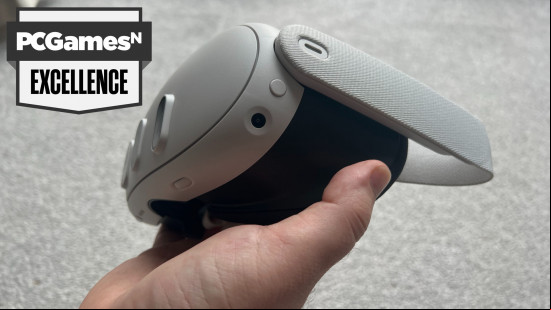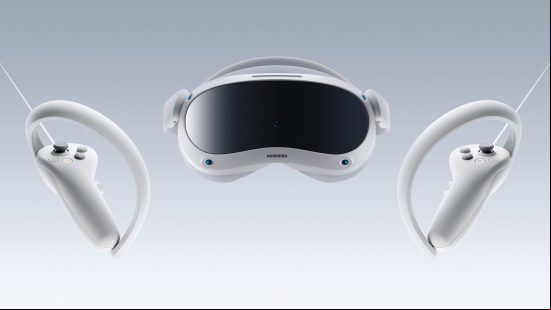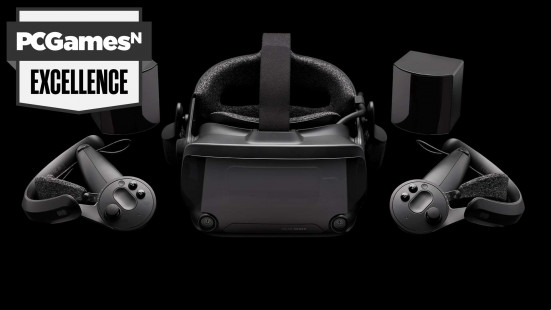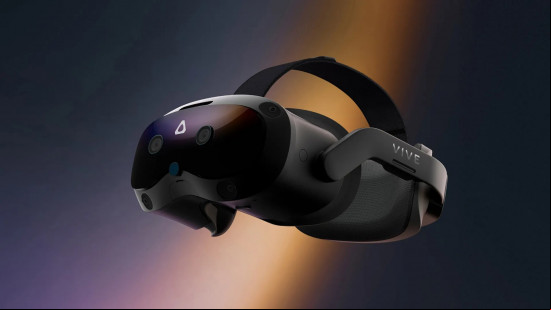What is the best VR headset? That depends on what you're hoping to do with your headset, whether it's mostly watch video, play tethered to your PC or play free-roaming games while stood up. Whatever your preference, we've got a recommendation for you. Sure, virtual reality is still a growing technology, but it's at a point where there are some really fantastic games just waiting to be experienced through the right headset.
After hours of gaming, our top choice overall is the FAQ sections of this guide that explain what to look for and answer your VR headset questions.
Why you can trust our advice ✔ At PCGamesN, our experts spend hours testing hardware and reviewing games and VPNs. We share honest, unbiased opinions to help you buy the best. Find out how we test.
How to choose the best VR headset
Choosing the best VR headset for PC gaming isn't necessarily complicated, but there are some crucial factors to consider, which you can read more about in the.
Each headset, whether made by HTC, best VR games on PC with a different flavor of immersion, and the most expensive option isn't necessarily the best. To help you get on your virtual feet, we've tested the latest VR headsets to see what they're like to use in real life, beyond their launch hype.
When putting this list together, we drew from a lot of personal hands-on experience with a number of the most highly regarded VR headsets. When you're trying to decide which one is right for you, there are several key factors to keep in mind.
The place to start is price. Considering that different VR headsets offer different focuses, it's no surprise that their price range can vary quite frequently. The Meta Quest 3S offers budget standalone and PC gaming for just $300/£290, while devices such as the Bigscreen Beyond will set you back $1,000/£1,150 before you get the required accessories. For anyone starting out in VR, we absolutely recommend starting with a cheaper option so you can get a sense of whether you enjoy it and what type of gaming you like, which can then help guide you when picking a more expensive option.
Next to consider is what you want to use your VR headset for. If you're only interested in PC gaming, then an option such as the Valve Index is focused exclusively on that. If you foresee yourself using VR on the sofa or elsewhere then standalone options such as the Meta Quest 3, Meta Quest 3S, and Pico 4 will be the way to go.
Getting into the nitty gritty of VR headset specs, resolution is one of the most important factors. Some VR games do their best to create a super realistic world filled with intricately detailed graphics. If that's the type of game that you like to play, you'll want as high a resolution as possible. The same goes for watching realistic VR video. If you're more interested in a casual, fun VR experience with games such as Beat Saber, though, then resolution is less of a priority.
Refresh rate is another crucial spec to look out for. Most headsets are "fast enough" with refresh rates of 72Hz or more but for the best experience – especially if you think you might be at all sensitive to motion sickness with VR – you'll want a higher refresh rate of 90Hz or more.
For those new to VR, the ease of setup could also be a key factor. Some of these headsets are designed so that they can essentially be used right out of the box (e.g. Meta Quest 3, Pico 4) thanks to inbuilt WiFi and batteries, whereas others (e.g. Valve Index, Bigscreen Beyond) are designed to be plugged into a PC, using your graphics card and other hardware to power the experience. The latter can be more of a pain to setup.
Along similar lines, some headsets have better in-built motion tracking than others. Most more modern headsets have so-called outside-in tracking that use sensors on the headset to track your movement but most older headsets require base stations to help the headset track you. These can be a pain to position around your room.
VR headset FAQs
Does VR cause sickness and headaches?
It depends on you. Yes, virtual reality gaming can lead to nausea and headaches, but unfortunately it's very difficult to tell if you'll be affected until you try it. However, there are a few steps you can take to minimize how badly you're affected.
One approach to try is only playing for short periods of time when you start. Set a timer for yourself for 20mins, for instance, then step away for a while before jumping back in. Also, have your first few forays into VR be when sat down, rather than jumping in and playing a free roaming game. Watch some VR videos, play some simpler games, and just generally get used to the feeling before taking your first steps.
Another general point is that the quality of the headset you're using can massively affect your nauseous feelings. If you've tried really basic VR before and not enjoyed it, you may find a quality headset doesn't have the same affect. Higher resolution screens and higher refresh rates can hugely smooth out the VR effect, making it feel much more natural.
It's also important to that this is just a matter of adjustment -similar to how rollercoasters make some people feel sick – and that it is not doing any permanent harm.
Is VR bad for your eyes?
No, there is no proof that using a VR headset can harm your eyes, just as there isn't for prolonged use of computer screens or looking at phones. that said, just like with those devices, taking breaks is certainly to be advised. This should reduce any eyestrain. Having said this, VR headsets will always come with an age restriction as they are not to be used by small children who are still developing.
Is VR worth it in 2025?
Absolutely. We'd say that as each year goes by, VR headsets become more and more appealing do to ever-improving technology. There's quite a large library of games that make use of VR now, or that are entirely built around its use. This isn't a fad that's going to go away any time soon and we recommend trying some of the amazing VR experiences that are currently available.
What do you need for VR?
To get started in VR these days all you need is a VR headset. The first few generations of modern VR headsets required a PC to power the graphics output. However, the likes of the Meta Quest 3/3S and Pico 4 can run completely on their own, with the Quest headsets in particularly having an impressive array of games available directly through the headset.
However, if you want to play your Steam game library, you will need a PC to stream those games from your PC to the headset. Connecting to a PC also opens up lots of other possibilities, such as transferring VR videos to your headset, streaming other non-Steam games and more.
Some headsets can connect to a PC natively via a USB-C connection while others use a DisplayPort connection from your graphics card. Meanwhile others such as the PlayStation VR 2 (PSVR 2) require a dedicated adapter to convert your PC's output to use with the headset.
What VR headset has the highest resolution?
The HTC Vive Pro 2 is still the highest resolution VR headset you can buy, despite being a few years old. It has a per-eye resolution of 4,896 x 2,448 pixels. That compares to 1,832 x 1,920 for the Quest 3 and 2,160 x 2,160 for the Pico 4. However, that headset is extremely expensive and not a good choice for home gaming. Meanwhile, the Pimax Crystal Light has a per-eye resolution of 2,880 x 2,880, but we're yet to test this headset, which is for PCVR only – it doesn't offer standalone use.
The Meta Quest 3 is our choice for the best VR headset, so if you're picking one up we can get you started with thebest free Meta Quest 3 games so you're not short on ideas for what to play.





